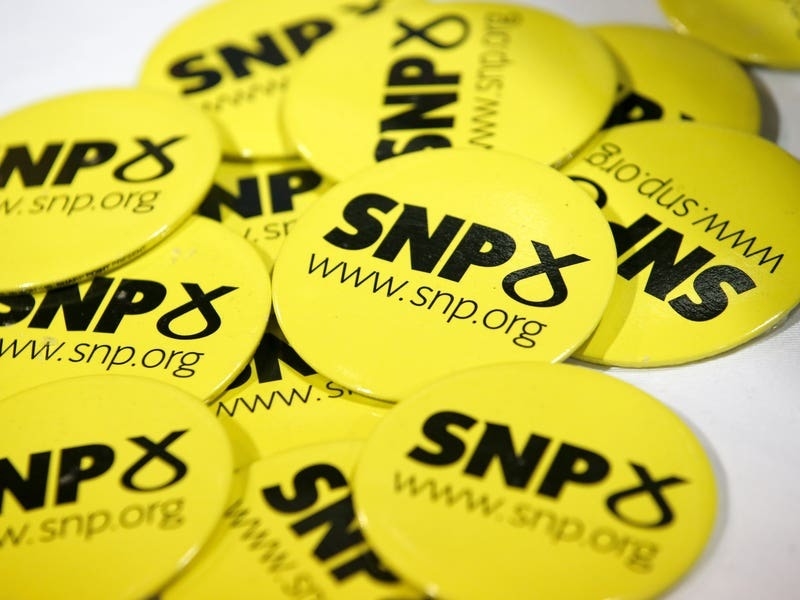Stocks shook off morning losses on Monday and surged in the afternoon to send the Standard & Poor’s 500 index to its best day in a week.
It is the latest turn for a market suddenly prone to quick shifts not only day to day but also hour to hour, as investors question whether President Donald Trump will really risk a trade war.
The S&P 500 lost as much as 0.6% shortly after trading began, only to finish the day 1.1% higher after rising 29.69 points to 2,720.94.
It is reminiscent of what happened on Friday, when stocks reversed course on speculation that Trump was only making an opening bid when he promised to impose stiff tariffs on imported steel and aluminium, rather than a final offer.
The Dow Jones industrial average jumped 336.70, or 1.4%, to 24,874.76, and the Nasdaq composite gained 72.84, or 1%, to 7,330.70. Both came back from early-morning losses.
Mr Trump took to Twitter again on Monday to defend the tariffs, which have riled trading partners around the world and already sparked talk of retaliation to heighten the worries about a possible trade war.
He highlighted trade deficits with Canada and Mexico, and he said tariffs “will only come off if” a new free-trade agreement between the three countries is signed.
Later in the day, House Speaker Paul Ryan said he is “extremely worried” about the consequences of a global trade war and urged the White House “to not advance with this plan”, according to a statement issued by his office.
“It’s incredibly difficult to try to understand the whims of this current administration and to try to make forecasts,” said Emily Roland, head of capital markets research for John Hancock Investments.
If a trade war does occur, it would hurt the global economy and the healthy profit growth that companies have been producing, two of the big drivers for the market.
“But right now, we think the impact should continue to be modest, as long as it’s all talk and no action,” she said.
Boeing offered a good example of how quickly the market shifted. The aerospace giant got the majority of its revenue from outside the United States last year, so it would be hurt if countries put up more barriers to global trade. Boeing was down as much as 2.3% in the morning before ending the day up 2.3%.
From its low point of the day to its high, the S&P 500 index carried investors through a swing of 1.9 percentage points. It’s the fifth straight day with a gap of more than 1.5 percentage points, as trading has become much more wild since the market’s placid, record-setting run from 2017 into January.
During that period, the typical day saw the S&P 500 drift just 0.5 percentage points from its low point to high.
The biggest gain in the S&P 500 came from XL Group, which surged after AXA said that it will acquire the insurance and reinsurance company for 15.3 billion dollars. Investors will get 57.60 dollars per XL Group share, and XL Group stock surged 12.62 dollars, or 29.1%, to 55.92 dollars.
In overseas stock markets, Europe was mostly higher, with Italy an exception after elections there saw no single party emerge with a majority in Parliament. That raises uncertainty about how closely Italy will work with the rest of the European Union.
France’s CAC 40 rose 0.6%, Germany’s DAX gained 1.5% and the FTSE 100 was up 0.7% in London.
In Asia, Japan’s Nikkei 225 fell 0.7%, South Korea’s Kospi dropped 1.1% and the Hang Seng in Hong Kong lost 2.3%.
Besides tariffs, investors are also keying in on the upcoming US jobs report that’s looming at the end of the week.
What first jolted the stock market from its peaceful rise to records was last month’s jobs report, which raised the spectre of higher inflation.
If wages continue to accelerate, investors would likely see it as more evidence that the Federal Reserve will raise interest rates higher and faster than expected, which could further upset markets.
As a demonstration of how nervous investors are, John Hancock’s Roland pointed to Fed Chairman Jerome Powell’s testimony before Congress last week, where he said the economy is improving.
“That first day, he didn’t say anything he hadn’t said before, and the market was so volatile,” Roland said.
The yield on the 10-year Treasury rose to 2.88% on Monday from 2.87% late on Friday.
In the commodities markets, benchmark US crude rose 1.32 dollars to settle at 62.57 dollars per barrel. Brent crude, the international standard, rose 1.17 dollars, or 1.8%, to 65.54 dollars a barrel.
Gold fell 3.50 dollars to settle at 1,319.90 dollars per ounce, silver lost five cents to 16.41 dollars per ounce and copper was close to flat at 3.13 dollars per pound.
Natural gas added a penny to 2.70 dollars per 1,000 cubic feet, heating oil rose 2 cents to 1.90 dollars per gallon and wholesale gasoline climbed three cents to 1.93 dollars per gallon.
The dollar rose to 106.20 Japanese yen from 105.54 yen late Friday.
The euro dipped to 1.2327 dollars from 1.2331, and the British pound climbed to 1.3833 dollars from 1.3790.






